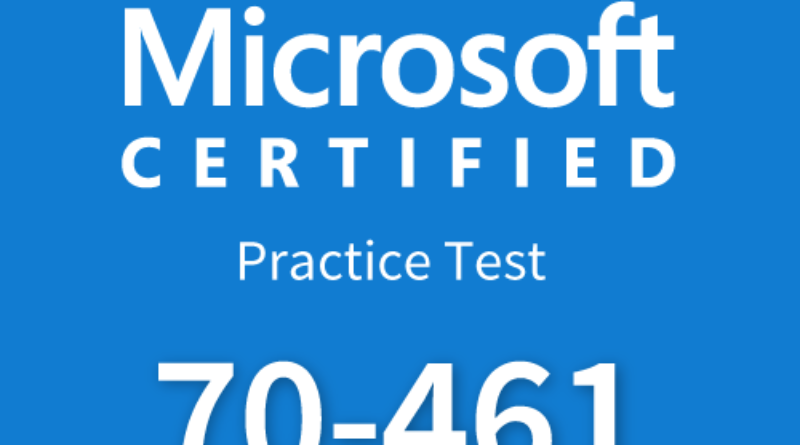Examen 70-461 V001
Results
#1. You develop three Microsoft SQL Server 2012 databases named Database1, Database2, and Database3. You have permissions on both Database1 and Database2. You plan to write and deploy a stored procedure named dbo.usp_InsertEvent in Database3. dbo.usp_InsertEvent must execute other stored procedures in the other databases. You need to ensure that callers that do not have permissions on Database1 or Database2 can execute the stored procedure. Which Transact-SQL statement should you use?
#2. You develop a Microsoft SQL Server 2012 database that contains a heap named OrdersHistorical. You write the following Transact-SQL query: INSERT INTO OrdersHistorical SELECT * FROM CompletedOrders You need to optimize transaction logging and locking for the statement. Which table hint should you use?
#3. You develop a Microsoft SQL Server 2012 database. You need to create and call a stored procedure that meets the following requirements: Accepts a single input parameter for CustomerID. Returns a single integer to the calling application. Which Transact-SQL statement or statements should you use? (Each correct answer presents part of the solution. Choose all that apply.)

#4. You use a Microsoft SQL Server 2012 database that contains two tables named SalesOrderHeader and SalesOrderDetail. The indexes on the tables are as shown in the exhibit You discover that the performance of the query is slow. Analysis of the query plan shows table scans where the estimated rows do not match the actual rows for SalesOrderHeader by using an unexpected index on SalesOrderDetail. You need to improve the performance of the query. What should you do?
#5. Your database contains a table named Purchases. The table includes a DATETIME column named PurchaseTime that stores the date and time each purchase is made. There is a non- clustered index on the PurchaseTime column. The business team wants a report that displays the total number of purchases made on the current day. You need to write a query that will return the correct results in the most efficient manner. Which Transact-SQL query should you use?
Explanation: Two answers will return the correct results (the «WHERE CONVERT…» and «WHERE … AND … » answers). The correct answer for Microsoft would be the answer that is most «efficient». Anybody have a clue as to which is most efficient? In the execution plan, the one that I’ve selected as the correct answer is the query with the shortest duration. Also, the query answer with «WHERE CONVERT…» threw warnings in the execution plan…something about affecting CardinalityEstimate and SeekPlan. I also found this article, which leads me to believe that I have the correct answer:






